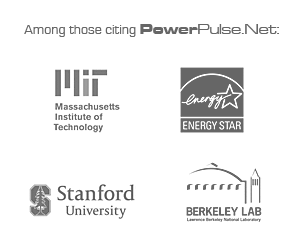An isolated step-up DC-DC converter: its application and comparison with other topologies

Let’s start with a short introduction into the problem of step-up DC-DC converters. The biggest challenge in designing these converters relates to the ratio between output voltage and input voltage. There is even a bigger problem when we need to provide power 2-4kW and higher and input voltage is 10-12VDC. Let’s establish a relationship between input voltage and input current, when this ratio (Vin/Iin) is above one, the problem will be smaller, the higher the number – the smaller the problem.
Let’s start with a short introduction into the problem of step-up DC-DC converters. The biggest challenge in designing these converters relates to the ratio between output voltage and input voltage. There is even a bigger problem when we need to provide power 2-4kW and higher and input voltage is 10-12VDC. Let’s establish a relationship between input voltage and input current, when this ratio (Vin/Iin) is above one, the problem will be smaller, the higher the number – the smaller the problem.
When the ratio is below one, it will become more and more difficult the farther it is away. In other words, when we have 10VDC and 1000ADC it will be a big challenge to accomplish the task. By the way, at the present time the requirement for DC-DC isolation converter with power 20-30kW for automotive application is not rare. In this case, many engineers try to connect a number of power stages in parallel.
This works somewhat, but it has a big disadvantage: there are too many active switches and transformers, that requires complex control and finally leads to a high cost and reduced reliability. The voltage converter in (Fig.1) is suitable for a DC-DC converter in a step-up application. The main advantage of this topology is reduction in complexity of the power transformer. The voltage across the low voltage side of transformer is, on average, twice higher than the input voltage, so the current via the low voltage side of the transformer will have an average value of half of the input current.

Figure 1: Proposal Topology
In this case, there will reduction in the turn’s ratio of the transformer and as a result the design and the construction of the transformer will be easier, the efficiency of the transformer will increase and the cost will be reduced. The regulation of output voltage is done by changing the duty cycle of switches S1 and S3. The switching of S2 and S4 is complementary to the switching of S1 and S3.
We have built several prototypes of DC-DC converters. We have also built a DC-AC converter without a DC-link (Fig.2). In this case converter can operate as a bidirectional converter. The authors suggest that for step-up DC-DC isolation converters with input voltage below 100VDC, it is reasonable to use paralleling when the input current is over 600-700A.

Figure 2: DC-AC converter
The cost of paralleling below this current will be at least twice as high as a single stage under the same conditions (Vin, Pout, efficiency, and commutation frequency). Basically, it makes sense to make a broad comparison in terms of technical aspects and cost only among these three topologies, Fig.3-4 and the proposed one.

Figure 3: Topology N1

Figure 4: Topology N2
The comparison of cost per kW was made according to the following norms: Vin, Vout, Pout and efficiency are the same for each topology. Table I shows a comparison of potential options of these topologies. We also included DAB in the tables as this topology has received a lot of attention.
| Max | Vin | Vout | Comm | Limit by | Sw | Ind | Block C | Cost 1kW | |
| DAB | 150A | 10-100 | 0-1000 | 50kHz | Turn-off | 8 | no | Huge | 1.3-1.5 |
| N1 | 200A | 30-100 | 0-1000 | 100kHz | Turn-off | 4 | 2 | no | 1.2-1.4 |
| N2 | 600A | 10-40 | Vmax/Vmin=2 | 300kHz | X-form | 6 | no | 1 | 1.1-1.2 |
| Prop | 600A | 10-100 | 0-1000 | 200kHz | C1&C2 | 4 | 2 | no | 1.0 |
Table II shows comparisons of real implementations of these topologies. As we can see, the cost of the proposed topology is lower than that of others and it has a wider application area. Also it is very reasonable to use this topology for a DC-AC converter without a DC-link, when low input ripple current is desired. Finally the proposed topology is a better solution for higher power at low voltage than parallel input stages.
| Pout | Vin | Vout | Comm | Eff | |
| DAB | 1.7kW | 10-14 | 360 | 20kHz | 92.0 |
| DAB | 2.4kW | 30 | 750 | 40kHz | 94.5 |
| N1 | 1.0kW | 20-50 | 350 | 50kHz | 95.8 |
| N1 | 1.4kW | 12 | 300 | 20kHz | 92.0 |
| N1 | 1.6kW | 12 | 300 | 20kHz | 88.0 |
| N2 | 3.5kW | 10.5-16 | 360 | 150kHz | 93.5 |
| N2 | 7.5kW | 20-30 | 600 | 120kHz | 94.0 |
| Prop | 1.7kW | 10.5-15 | 170 | 120kHz | 93.5 |
| Prop | 3.1kW | 22-30 | 380 | 120kHz | 94.5 |
| Prop | 7.0kW | 42-72 | 380 | 100kHz | 96.5 |














